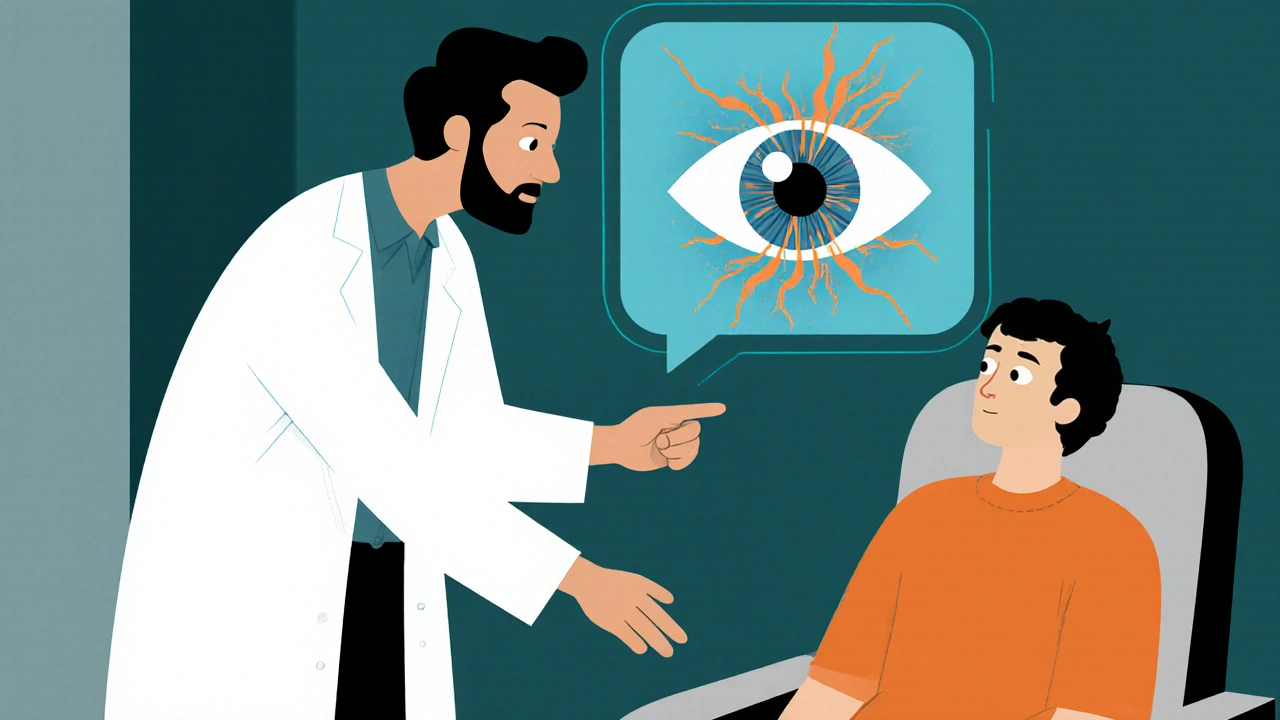Glaucoma: A Complete Guide to Causes, Risks, and Management
When exploring Glaucoma, a chronic eye disorder that progressively damages the optic nerve and can cause permanent vision loss. Also known as open‑angle or angle‑closure glaucoma, it requires close monitoring of intraocular pressure. The pressure, known as intraocular pressure, the fluid force inside the eye that, when elevated, pushes on the optic nerve, is the main driver of disease progression. The optic nerve, the cable that carries visual signals from the retina to the brain is especially vulnerable; sustained pressure leads to its gradual loss of fibers, resulting in blind spots that expand over time. Managing this pressure is why eye drops, topical medications formulated to lower intraocular pressure are often the first line of defense. In simple terms, glaucoma encompasses optic nerve damage, demands management of intraocular pressure, and is influenced by eye drops – a clear cause‑effect chain that shapes every treatment plan.Glaucoma affects millions worldwide, and early detection can mean the difference between clear vision and irreversible loss.
Key Factors, Symptoms, and Treatment Options
Age, family history, and certain ethnic backgrounds raise the odds of developing glaucoma, but anyone can be at risk if their intraocular pressure climbs above normal levels (typically over 21 mmHg). Common symptoms include peripheral vision loss, halos around lights, and occasional eye pain, though many people notice nothing until routine eye exams reveal subtle changes in the visual field. Diagnosis hinges on measuring intraocular pressure with tonometry, evaluating the optic nerve head via ophthalmoscopy, and mapping visual fields to spot early blind spots. Once confirmed, the treatment roadmap starts with eye drops such as prostaglandin analogues, beta‑blockers, or carbonic anhydrase inhibitors, each designed to either improve fluid outflow or reduce fluid production. If drops alone aren’t enough, laser therapies—like selective laser trabeculoplasty—can open drainage pathways, while surgical options (e.g., trabeculectomy or tube shunts) create new routes for fluid to exit the eye. Lifestyle tweaks also matter: regular exercise, a diet rich in leafy greens, and avoiding excessive caffeine can modestly influence pressure levels. All these steps tie back to the central goal—keeping intraocular pressure within a safe range to protect the optic nerve.
Long‑term management means staying on top of eye‑care appointments, adhering to prescribed eye drops, and reporting any new visual changes immediately. Many patients learn to self‑monitor their vision with simple tools like a Amsler grid, catching early signs before they become permanent. In addition, discussing systemic health factors—such as hypertension or diabetes—with your doctor can uncover hidden contributors to pressure spikes. By understanding how glaucoma, intraocular pressure, optic nerve health, and eye‑drop therapy intersect, you’re better equipped to make informed decisions and work collaboratively with eye specialists. Below, you’ll find a curated collection of articles that dive deeper into related medications, eye‑health tips, and the science behind pressure‑lowering treatments, giving you practical insights to take charge of your eye health.

Glaucoma and Visual Field Testing: What to Expect
Learn what to expect during a glaucoma visual field test, why it matters, how it works, preparation tips, result interpretation, and next steps for managing your eye health.
